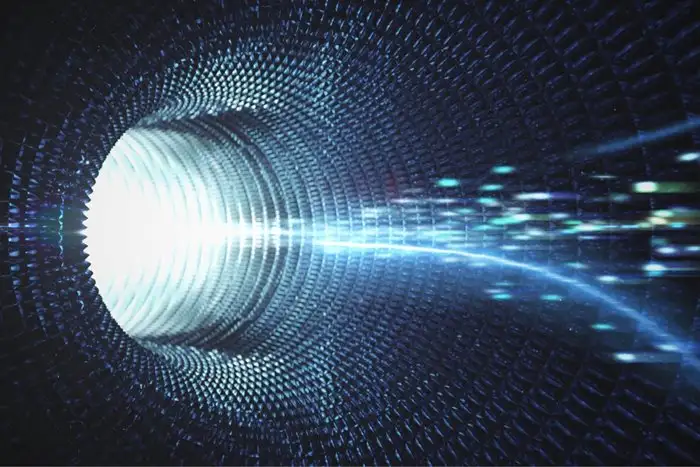


Technological advances in quantum computing enable its general acceptance; But to achieve this goal, many side research areas should be explored for its application in the real world. Chinese researchers have now succeeded in connecting two quantum memories (devices that can store information in quantum states for retrieval at a later time) over the longest distance recorded to date, 12.5 kilometers. This stage has resulted in the concept of quantum internet; Internet that will enable decentralized communication between quantum computers.
Researchers in collaboration with the University of Science and Technology of China at the Jinan Institute of Quantum Technology have shown that entangled quantum memories can maintain their coherence even when an urban environment is between them. Entanglement is already known and refers to the process in which two quantum units (such as qubits or quantum memories) are connected; So that their modes and contents cannot be described separately.
Theoretically, entanglement can be maintained regardless of distance. The problem is that the sensitivity of quantum units to environmental disturbances such as electromagnetic or thermal interference will lead to side effects, including the collapse of their states, which can cause the loss of coherence and entanglement and, as a result, information.
According to TomsHardware, in 2020, researchers conducted experiments in which they succeeded in connecting two different qubits at a distance of 50 kilometers through a fiber optic cable. However, the data transmission method in this experiment was scaled to work without environmental interference and also facilitated the control of the qubit environment.

Xiao-Hui Bao, one of the researchers involved in the study, told Phys.org:
In 2020, we published a paper in which we demonstrated the entanglement of two quantum memories through a 50 km fiber optic link. In that experiment, both memories we used were located in the same laboratory; Therefore, they were not completely independent. The next step in our research was to make the two memories independent; While there is a long distance between them.
Currently, physics requires that quantum information is always sent via classical methods such as fiber optic cables; So the researchers created two quantum ensembles, where quantum memory A was first in the lab and then, to add energy to it, it was hit with a laser in a process called "excitation."
The extra energy is immediately emitted as photons; Because quantum memory naturally returns to its ground state. Furthermore, photons are intrinsically entangled with respect to the quantum memory that emitted them. Then, the researchers used a fiber optic cable to transmit the photon emitted from the main node to the second node; A node that was located at a distance of 12.5 km. The entry of this photon into the second node means that researchers can now use its quantum state information to entangle a new quantum memory. Finally, the results of the experiments of these researchers show that two different quantum memories are so-called intertwined despite the distance of 12.5 km between them.
Transmitting a single photon through a 12.5 km fiber optic without any data loss is not a simple task; Especially considering the low energy level of the emitted photon (near infrared at 725 nm), which makes them especially vulnerable to interference caused by higher energy. To solve the problem of low energy level, the researchers used the quantum frequency conversion technique to change the wavelength of the photon to 1342 nm, which significantly improves the overall transmission efficiency.
This research contributes to the emergence of the quantum internet; Where quantum information can be sent from node to node more efficiently and securely. Furthermore, since the photon is very sensitive to external interference, anyone trying to access its contents will cause the photon in question to collapse; Therefore, the information stored in it will be lost; A capability that may lead to a new era of secure quantum communications.
Also, the research of the Chinese scientists opens the door to the decentralized operation of quantum computers, where they can follow a distributed scheme with the same quantum computer transmitting the required information from one node to another. Overall, the results of these experiments can be a very important and necessary step towards the quantum future.
Copyright © 2025, All Right Reserved Wildcoder.ir
User opinions
There are no comments for this post